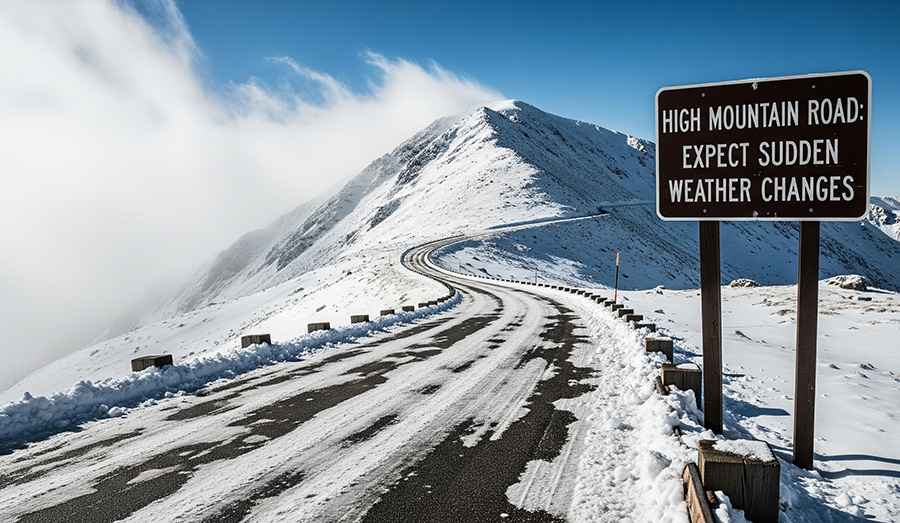What to Know Before Driving High Mountain Roads in the USA?
Driving through the high mountains of the USA — whether in Colorado, California, Montana, or elsewhere — can be an unforgettable adventure. Towering peaks, sweeping views, and scenic byways await. But if you’re not used to high-altitude driving, be prepared: it can also be dangerous, even in summer.

Here’s what every driver should know before heading up into the high country.
Rapid Weather Changes: Be Ready for Anything
Mountain weather is famously unpredictable. You can start the day under clear blue skies and find yourself in a sudden downpour, thunderstorm, or even a summer snowstorm just hours later.
- Always carry extra clothing, including a waterproof jacket, layers, and warm gear.
- Rain gear is a must, even in July.
- Expect the unexpected: snow, hail, or icy conditions can happen any time of year.
Altitude Sickness is Real — Take it Seriously
At higher elevations, oxygen levels drop to nearly half of what they are at sea level. That can affect even healthy people.
Symptoms to watch for:
- Headaches
- Dizziness
- Shortness of breath
- Nausea or fatigue
If you feel any of these:
- Stop and rest
- Drink plenty of water
- Avoid alcohol and caffeine
Your body will usually start adjusting after a couple of days, but elderly people, young children, and those with pre-existing conditions may be more sensitive. If symptoms worsen, seek medical help and descend to a lower elevation.
Hydration: Don’t Wait Until You’re Thirsty
At high altitudes, the air is drier and winds are stronger, which can lead to dehydration faster than you might expect.
- Drink more water than usual, even if you don’t feel thirsty.
- Avoid drinks that dehydrate you (like alcohol).
- If you’re hiking or exerting yourself, drink even more.
Sun and UV Exposure: Twice the Trouble
The sun is stronger at elevation — UV radiation doubles at high altitude compared to sea level.
- Always wear broad-spectrum sunscreen, even on cloudy days.
- Wear sunglasses with UV protection to protect your eyes.
- Cover exposed skin with light clothing or sun-protective fabrics.
Lightning: A Deadly Risk in the Mountains
Storms roll in quickly in the high country, especially in the afternoons.
- If you see a storm approaching, head to lower ground immediately.
- Do NOT seek shelter under trees — they attract lightning.
- Stay in your vehicle if possible — it’s one of the safest places in a lightning storm.
Final Thoughts
Driving in the high mountains is stunning — but only if you’re prepared. With a little planning and caution, you can enjoy the beauty safely.
Respect the weather, listen to your body, and stay aware. The mountains are majestic, but they don’t forgive carelessness.